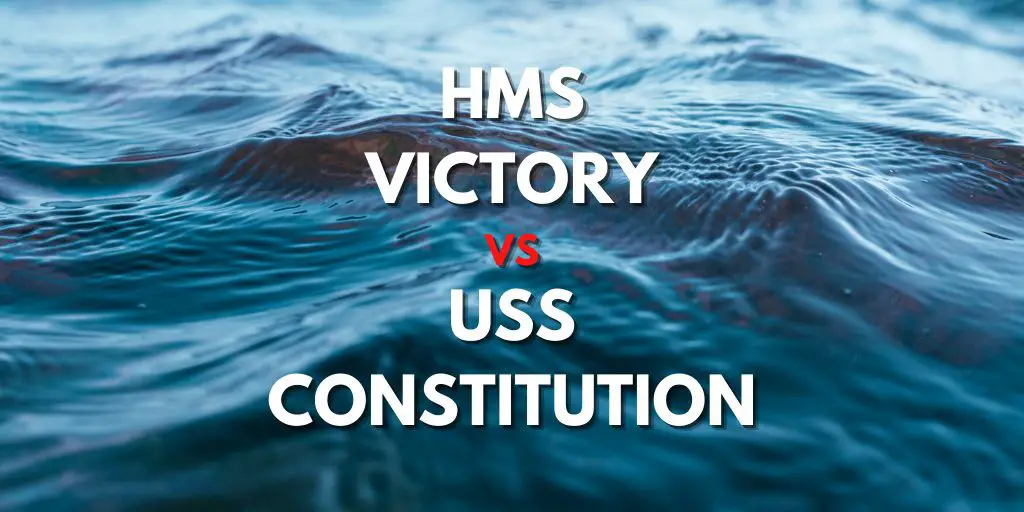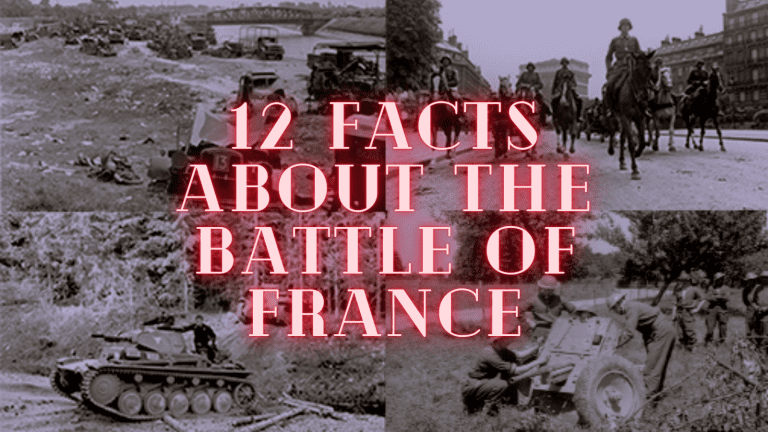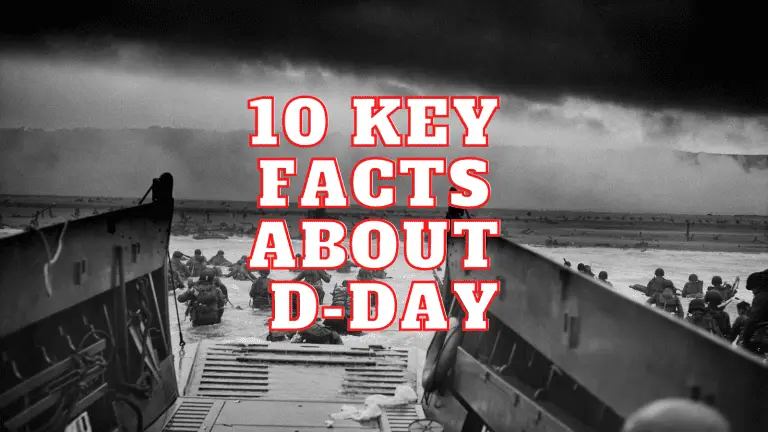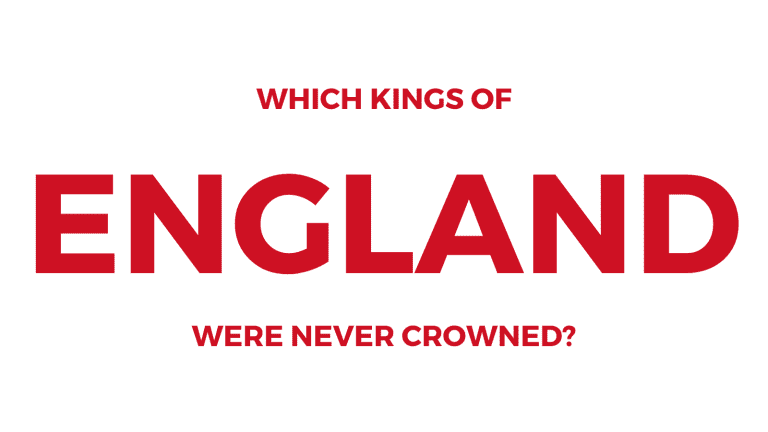HMS Victory vs USS Constitution
[et_pb_section fb_built=”1″ _builder_version=”4.7.7″ _module_preset=”default” custom_margin=”-53px|||||”][et_pb_row _builder_version=”4.7.7″ _module_preset=”default” min_height=”558.5px”][et_pb_column type=”4_4″ _builder_version=”4.7.7″ _module_preset=”default”][et_pb_text _builder_version=”4.7.7″ _module_preset=”default” min_height=”513.6px” custom_padding=”0px|||||”]
| HMS Victory |
HMS CONSTITUTION
|
|
|
Launched
|
7th May 1765
|
12th October 1797
|
|
Class
|
104 Gun First Rate Ship of the Line |
44 Gun United States Class Frigate
|
|
Displacement
|
3500 Tons
|
2200 Tons
|
|
Length
|
186ft
|
175ft |
|
Beam
|
51ft 10 in
|
43ft 6 in
|
|
Max Speed
|
11 knots
|
13 knots
|
|
Complement
|
850 | 450 |
|
Key Battles
|
First Battle of Ushant Second Battle of Ushant Battle of Cape Spartel Battle of Cape St Vincent Battle of Trafalgar |
Quaisi-War Vs France Bombardment of Tripoli War of 1812 |
[/et_pb_text][/et_pb_column][/et_pb_row][et_pb_row _builder_version=”4.7.7″ _module_preset=”default”][et_pb_column type=”4_4″ _builder_version=”4.7.7″ _module_preset=”default”][et_pb_text _builder_version=”4.7.7″ _module_preset=”default”]
Two of the oldest, and most famous warships in the world; HMS Victory and the USS Constitution.
But how would they measure up in a battle?
This post was inspired by some “heavy debate” on some of my TikTok videos. (Wait? You haven’t seen my TikTok account CLICK HERE)
Victory is the oldest ship still in Commission by any Navy in the world. It remains the flagship of the First Sea Lord. Whereas Constitution is the oldest ship in commission still afloat.
[/et_pb_text][/et_pb_column][/et_pb_row][et_pb_row _builder_version=”4.7.7″ _module_preset=”default”][et_pb_column type=”4_4″ _builder_version=”4.7.7″ _module_preset=”default”][et_pb_text _builder_version=”4.7.7″ _module_preset=”default”]
HMS Victory Background
[/et_pb_text][/et_pb_column][/et_pb_row][et_pb_row _builder_version=”4.7.7″ _module_preset=”default”][et_pb_column type=”4_4″ _builder_version=”4.7.7″ _module_preset=”default”][et_pb_text _builder_version=”4.7.7″ _module_preset=”default”]
There have been six Royal Navy warships called HMS Victory, but the 1765 ship is the final one. As viewers on the TikTok video were keen to point out, HMS Victory is older than the United States itself.
Victory first came into service in 1778 when France joined the American War of Independence. She was made the flagship of Admiral Augustus Keppel in May of that year.
Her first action came in July 1778 at the First Battle of Ushant. A little before noon on the 24th of July, Victory opened fire on the French Ships, Bretagne, and the Ville de Paris. It wasn’t the greatest start to her career, as Keppel was later court-martialled for his role in the battle.
The Second Battle of Ushant occurred on the 12th of December, 1781. The Victory was under the command of Captain Henry Cromwell but under the flag of Admiral Richard Kempenfelt. HMS Victory’s mission was to intercept a convoy that had left from Brest. However, unbeknown to Kempenfelt, the convoy was escorted by twenty-one French ships of the line. Kempenfelt captured fifteen enemy vessels before the French were forced to disperse due to the weather conditions.
HMS Victory was converted into a hospital ship in 1798 after being declared unfit for active service after concern about the strength of the timbers in her stern.
It seemed like it would be an inconspicuous end for Victory. Declared not seaworthy and relegated to hospital duty.
However, just a year later, HMS Impregnable ran around and couldn’t be repaired. The navy was now short of a ship. The decision was taken to recondition Victory. The final cost was £70,933 after numerous defects were found. The work took three years.
Vice-Admiral Nelson boarded Victory on the 20th May 1803, and they set sail out of Spithead.
On the 23rd of September, HMS Victory joined the British fleet off Cadiz.
Victory’s most famous battle was about to take place.
[/et_pb_text][/et_pb_column][/et_pb_row][et_pb_row _builder_version=”4.7.7″ _module_preset=”default”][et_pb_column type=”4_4″ _builder_version=”4.7.7″ _module_preset=”default”][et_pb_text _builder_version=”4.7.7″ _module_preset=”default”]
The Battle of Trafalgar
[/et_pb_text][/et_pb_column][/et_pb_row][et_pb_row _builder_version=”4.7.7″ _module_preset=”default”][et_pb_column type=”4_4″ _builder_version=”4.7.7″ _module_preset=”default”][et_pb_text _builder_version=”4.7.7″ _module_preset=”default”]
The allied fleet of France and Spain, under the command of Admiral Villeneuve, set sail from Cadiz towards the Straits of Gibraltar.
On the evening of the 20th of October, Villeneuve spotted the first British ships.
By the morning of the 21st, the British were just Northwest of Cape Trafalgar; at six in the morning, Nelson gave the order to prepare for battle.
Nelson found himself outnumbered and outgunned.
He quickly devised a plan. He would sail in two columns directly at the allied line. His aim would be to split it apart to eliminate the enemies’ numerical advantage.
At 11:45, he gave the signal, “England expects that every man will do his duty.”
HMS Victory headed one of the two columns, and as such, it took much of the brunt of the French guns. In fact, it was so overwhelmed, it was about to be boarded by the French ship, Redoubtable.
Then came the musket shot that hit Nelson. Nelson exclaimed, “They have finally succeeded. I am dead.” He was taken below decks and died three hours afterward.
The Victory was saved from boarding by the HMS Temeraire, who fired on the Redoubtable with carronade causing numerous French casualties.
However, during the engagement, HMS Victory suffered 57 deaths and 102 wounded.
22 Allied ships were taken to a loss of no British. It was a famous victory for Britain, but at the cost of one of its great military heroes. When told of the news of Nelson’s death, the king was said to have cried.
HMS Victory was towed by HMS Neptune to Gibraltar for repairs before carrying Nelson’s body back to England. Nelson’s body was famously pickled in a bottle of brandy to preserve it.
[/et_pb_text][/et_pb_column][/et_pb_row][et_pb_row _builder_version=”4.7.7″ _module_preset=”default”][et_pb_column type=”4_4″ _builder_version=”4.7.7″ _module_preset=”default”][et_pb_text _builder_version=”4.7.7″ _module_preset=”default”]
Second Rate Ship of the Line
[/et_pb_text][/et_pb_column][/et_pb_row][et_pb_row _builder_version=”4.7.7″ _module_preset=”default”][et_pb_column type=”4_4″ _builder_version=”4.7.7″ _module_preset=”default”][et_pb_text _builder_version=”4.7.7″ _module_preset=”default”]
The royal navy relegated Victory to a second-rate ship of the line in November of 1807. The Middle deck 24 pounders were replaced with smaller 18 pounders from laid-up ships.
Between 1813 and 1817, she was used as a prison ship.
In 1837 came the order that HMS Victory was to be broken up. There was outrage throughout the country. The order was never carried out, and the ship was left almost forgotten at Portsmouth, officially designated a tender for the new HMS Wellington. It was at this point that tours of the vessel started taking place.
An accident in 1903 meant that it was proposed she be scrapped once more. However, the king intervened, and repairs were undertaken.
[/et_pb_text][/et_pb_column][/et_pb_row][et_pb_row _builder_version=”4.7.7″ _module_preset=”default”][et_pb_column type=”4_4″ _builder_version=”4.7.7″ _module_preset=”default”][et_pb_text _builder_version=”4.7.7″ _module_preset=”default”]
Dry Dock Number 2 Portsmouth
[/et_pb_text][/et_pb_column][/et_pb_row][et_pb_row _builder_version=”4.7.7″ _module_preset=”default”][et_pb_column type=”4_4″ _builder_version=”4.7.7″ _module_preset=”default”][et_pb_text _builder_version=”4.7.7″ _module_preset=”default”]
On the 12th January 1922, she was moved to No. 2 Dock, Portsmouth, which became her permanent home.
Her hull was damaged during the second world war when a 500lb bomb broke her keel.
She has been the flagship of the first sea lord since 2012 (before that, the flagship of the second sea lord.)
[/et_pb_text][/et_pb_column][/et_pb_row][et_pb_row _builder_version=”4.7.7″ _module_preset=”default”][et_pb_column type=”4_4″ _builder_version=”4.7.7″ _module_preset=”default”][et_pb_text _builder_version=”4.7.7″ _module_preset=”default”]
USS Constitution Background
[/et_pb_text][/et_pb_column][/et_pb_row][et_pb_row _builder_version=”4.7.7″ _module_preset=”default”][et_pb_column type=”4_4″ _builder_version=”4.7.7″ _module_preset=”default”][et_pb_text _builder_version=”4.7.7″ _module_preset=”default”]
The USS Constitution is a three-mast heavy frigate of the United States Navy launched on 21st October 1797 after being built in Edmund Hart’s navy yard.
Constitution was one of ten names submitted to President George Washington. It seemed a perfect choice.
Her first service came in the Quasi-War against France. She wasn’t ready when ordered to sea, and sixteen 18 pound cannons were taken from Castle Island so she could sail. Her mission was to harry French shipping.
Further service came in the First Barby War, and she took part in the Battle of Tripoli Harbour in 1804. Her principal role was to bombard the gun batteries ashore. She continued operations around Tripoli, participating in the blockade in April 1805.
A peace treaty was finally signed on board the Constitution on the 3rd of June.
[/et_pb_text][/et_pb_column][/et_pb_row][et_pb_row _builder_version=”4.7.7″ _module_preset=”default”][et_pb_column type=”4_4″ _builder_version=”4.7.7″ _module_preset=”default”][et_pb_text _builder_version=”4.7.7″ _module_preset=”default”]
War of 1812
[/et_pb_text][/et_pb_column][/et_pb_row][et_pb_row _builder_version=”4.7.7″ _module_preset=”default”][et_pb_column type=”4_4″ _builder_version=”4.7.7″ _module_preset=”default”][et_pb_text _builder_version=”4.7.7″ _module_preset=”default”]
War was declared between Great Britain and the United States on the 18th of June, and the USS Constitution took to the sea on the 12th of July.
Issac Hull was in command of the vessel. He believed that the ships he saw off New Jersey were the squadron he was trying to link up with. Then he realised that they were British Royal Navy ships…. and they had begun to give chase.
The chase lasted 57 hours, with the Constitution finally pumping over 2,000 gallons of drinking water overboard in an attempt to outrun the British.
Finally, on the 19th of July, the Royal Navy ships abandoned their pursuit.
A month later, the British were back with HMS Guerriere opening fire upon Constitution. The Constitution replied with a full double-loaded broadside of grapeshot which took out the British ship’s mizzenmast. With the ability to control the vessel lost, the Guerriere collided with the Constitution. Despite both ships attempting to board the other, they both failed due to the heavy sea.
When the ships came apart, both HMS Guerriere’s foremast and mainmast collapsed.
The British had little choice but to surrender.
[/et_pb_text][/et_pb_column][/et_pb_row][et_pb_row _builder_version=”4.7.7″ _module_preset=”default”][et_pb_column type=”4_4″ _builder_version=”4.7.7″ _module_preset=”default”][et_pb_text _builder_version=”4.7.7″ _module_preset=”default”]
Old Ironsides
[/et_pb_text][/et_pb_column][/et_pb_row][et_pb_row _builder_version=”4.7.7″ _module_preset=”default”][et_pb_column type=”4_4″ _builder_version=”4.7.7″ _module_preset=”default”][et_pb_text _builder_version=”4.7.7″ _module_preset=”default”]
During the battle, much of the British shot rebounded off the Hull of the USS Constitution.
An American sailor reportedly joked, “Her sides are made of iron.”
The name stuck.
The USS Constitution will now forever be known as Old Ironsides.
On the 29th of December, now under the command of William Bainbridge, the Constitution battled with HMS Java near Brazil.
The result was remarkably similar to the engagement with HMS Guerriere. Java’s foremast collapsed, and the fighting top collapsed two desks down.
HMS Java surrendered.
The ship was so severely damaged that Bainbridge burned her. But had the ship’s Helm salvaged and installed in on the Constitution as hers had been damaged.
She had another engagement with the British in 1813 with the smaller ships, Cyane and Levant. She defeated them both. Later it was discovered that 12, 32-pound cannonballs were embedded in her hull.
She was placed in ordinary in January 1816. However, she was refitted to take up duty with the Mediterranean Squadron in April 1820.
[/et_pb_text][/et_pb_column][/et_pb_row][et_pb_row _builder_version=”4.7.7″ _module_preset=”default”][et_pb_column type=”4_4″ _builder_version=”4.7.7″ _module_preset=”default”][et_pb_text _builder_version=”4.7.7″ _module_preset=”default”]
Parallels with HMS victory
[/et_pb_text][/et_pb_column][/et_pb_row][et_pb_row _builder_version=”4.7.7″ _module_preset=”default”][et_pb_column type=”4_4″ _builder_version=”4.7.7″ _module_preset=”default”][et_pb_text _builder_version=”4.7.7″ _module_preset=”default”]
When news appeared that the Navy intended to strap the Constitution, there was general outrage from the public.
The poem “Old Ironsides” by Oliver Wendell Holmes was published in the Boston advertiser on the 16th of September 1830. That helped drive the public protests.
Ultimately, the estimated repair cost of US$157,000 was finally approved.
In 1857 constitution was changed to a second rate ship of the line. She was refitted to become a training vessel that included classrooms on both the spar and gun decks. In this part of this process, the number of guns was reduced to just 16.
During the US Civil War, she was towed to New York, which was considered the safest harbour for her. Subsequently, she was relocated to Newport, Rhode Island, for the duration of the entire war.
By 1871, she deteriorated that she was retired as even a training ship and was towed to the Philadelphia Naval Yard where she was placed on ordinary on the 26th of September.
A further overhaul began in 1873 so that the ship could participate in the Centenial celebrations of the United States. However, the work dragged on, and she missed the celebration.
[/et_pb_text][/et_pb_column][/et_pb_row][et_pb_row _builder_version=”4.7.7″ _module_preset=”default”][et_pb_column type=”4_4″ _builder_version=”4.7.7″ _module_preset=”default”][et_pb_text _builder_version=”4.7.7″ _module_preset=”default”]
The 1900s and beyond
[/et_pb_text][/et_pb_column][/et_pb_row][et_pb_row _builder_version=”4.7.7″ _module_preset=”default”][et_pb_column type=”4_4″ _builder_version=”4.7.7″ _module_preset=”default”][et_pb_text _builder_version=”4.7.7″ _module_preset=”default”]
Due to further declines in her condition, in 1905, it was suggested the Constitution be towed out to see and to be used for target practice.
Once again, there were significant public protests, and Congress authorised US$100,000 to restore the ship. By 1907, she was used as a museum ship.
She participated in the US by centenary celebrations and even welcomed the Queen and the Duke of Edinburgh onboard.
The US Constitution is now berthed at Pier One of the former Charlestown Navy Yard. Each she is towed into Boston Harbour, performs gun demonstrations before turning and mooring in the opposite direction to ensure even erosion and weathering.
[/et_pb_text][et_pb_video src=”https://www.youtube.com/watch?v=EOMXkwuPpyY” _builder_version=”4.7.7″ _module_preset=”default” hover_enabled=”0″ sticky_enabled=”0″][/et_pb_video][/et_pb_column][/et_pb_row][et_pb_row _builder_version=”4.7.7″ _module_preset=”default”][et_pb_column type=”4_4″ _builder_version=”4.7.7″ _module_preset=”default”][et_pb_text _builder_version=”4.7.7″ _module_preset=”default”]
HMS Victory Vs USS Constitution
[/et_pb_text][/et_pb_column][/et_pb_row][et_pb_row _builder_version=”4.7.7″ _module_preset=”default”][et_pb_column type=”4_4″ _builder_version=”4.7.7″ _module_preset=”default”][et_pb_text _builder_version=”4.7.7″ _module_preset=”default”]
These two legendary ships have never met in battle. But what would happen if they did and when both were in their prime?
It is hard to tell.
At first glance, one might think that the Victory outguns the Constitution so heavily that the only option she would have would is to run. The only statistic that is in the Constitution’s favour is the fact that she is quicker.
The crew of the Victory was bigger and would have been better trained.
Constitution’s only chance would have been her speed and maneuverability in comparison to HMS Victory.
It’s a debate that has raged for a long time and one that won’t ever be settled.
[/et_pb_text][/et_pb_column][/et_pb_row][/et_pb_section]






